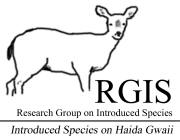

An overview of consequences
- Menu
- Home
- Haida Gwaii
- Introduced Species
- RGIS
- What did we learn?
- Research
- Publications
- RGIS symposium
- School curriculum
- Contacts
- English
- Français
|
||
|
Beaver were introduced
to Haida Gwaii in Masset Inlet in 1936 by the BC Game Commission
as a source of fur for trappers. Beaver don't grow high quality pelts in the mild coastal climate and in the absence of any other predators they have spread throughout the Islands. |
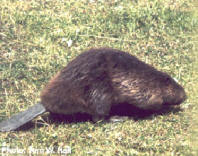 |
|
|
In some areas of Haida
Gwaii beaver have had a huge impact.
|
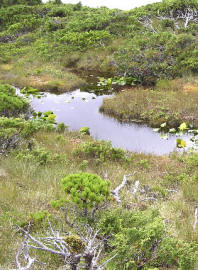 |
|
|
Beavers build dams and flood large areas raising the level of small lakes, killing surrounding plants, eliminating shoreline nesting areas, affecting salmon spawning streams and generally making profound changes in the ecosystem. |
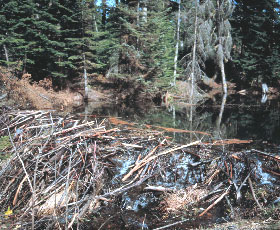 |
|
|
Beaver dams can block
salmon movements upstream and cause siltation in spawning beds.
|
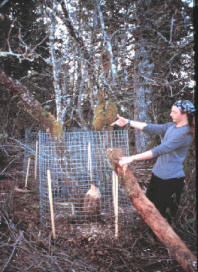 |
|
|
Beaver activities change
water courses which in turn impacts forest growth. This has concerned
the forestry companies for many years.
|
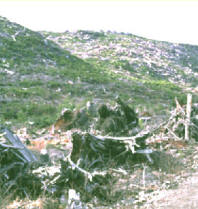 |
|
| return to top of page |
||